Vedas and the Language used to compose the Vedas
The Vedas are the oldest known and revered collection of ancient Indian scriptures, which are the foundational texts of Hindu philosophy and spirituality. The linguistic composition and structure of the Vedas reveal information not only about the religious practices of the time but also about the evolution of the Sanskrit language. This article will discuss the language used to compose the Vedas, its characteristics, significance, and broader implications for understanding early Indian culture.
What was the language used to compose the Vedas?
The Vedas were written in Vedic Sanskrit-an older variety of classical Sanskrit. Vedic Sanskrit has phonetic richness and contains extensive vocabulary, as well as very complex grammatical structures. Though belonging to a broad group of Indo European, the Vedic Sanskrit stands somewhat distinctly different from those groups.
Phonetics and Phonology
Vedic Sanskrit is also characterized by an elaborate system of phonetics. The language uses a variety of sounds, such as different kinds of vowels and consonants. The Vedic texts also show a consciousness of sound patterns, and the resulting texts are said to contain “samaveda” melodies, which consist of musical chanting. Sound is essential, since the oral tradition focused on the correct recitation of the mantras.
Morphology
Among its many other morphological characteristics, in the usage of Vedic Sanskrit, there existed the infusion of inflexions for all three nouns, verbs, and adjectives to communicate grammatical relationship ideas, including case, number, and mood, hugely impactful to the meaning of these texts. For example, suffixes attached to the words indicate not only a subject or object but, through those words, the nuances of the relationship in question for the context.
Syntax
Vedic Sanskrit is flexible in syntax as opposed to the modern languages. The word order can be varied without changing the essential meaning of a sentence, thereby giving scope for poetic and stylistic variations. This syntactic freedom allowed poets to write complex verses with vivid imagery that would reflect the depth of thought and spirituality embedded in the Vedas.
Textual Structure
The Vedas consist of four major texts: the Rigveda, Samaveda, Yajurveda, and Atharvaveda. Each is unique in its features and purpose, and the language in each gives an insight into its specific context.
Rigveda
The oldest and most important of the four, the Rigveda, mainly contains hymns to several deities. The language is richly poetic with dense imagery, metaphors, and symbolism. The complexity of verses calls for multiple interpretations; this text is, therefore, rich and bountiful in store for scholars.
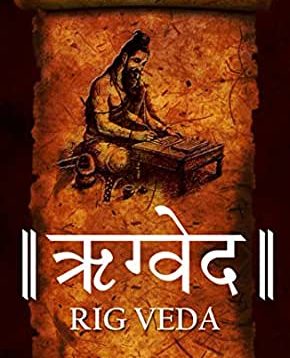
The Rigveda is one of the oldest sacred texts in the world and a foundational scripture of Hinduism, which is a critical pillar of ancient Indian literature. It was composed in Sanskrit around 1500–1200 BCE and represents a significant cultural and spiritual heritage that has influenced not just India but the broader spectrum of human thought.
Historical Context of Rigveda
The Rigveda falls into the category of Vedic India, where Indo-Aryans had invaded and occupied the Indian subcontinent. It was the period when first urban centers were developed and agriculture was advanced. These complex social structures developed. A collection of hymns dedicated to deities is the content, showing religious practices and social mores of the period.
Structure and Content
The Rigveda is divided into ten books, known as mandalas. Each of the mandalas includes hymns that are varied in nature, serving different purposes—rituals and prayers through philosophical inquiries. The hymns praise natural forces such as Agni (the fire god), Indra (the king of gods), and Varuna (the cosmic order). These reflect a deep reverence for the elements and their influence over human life.
The language of the Rigveda is rich and complex, making use of many poetic techniques, metaphors, and allegories. Its verses communicate profound truths about existence, cosmology, and the human condition. The text also contains philosophical ideas that later formed the basis of various schools of thought in Hindu philosophy.
Importance of Rigveda
The Rigveda holds great significance beyond the religious connotations. It is an important historical document that sheds light on early Indo-Aryan society, including information about social structures, rituals, ethics, and the relationship between man and the divine. The discussion on the themes of creation, order (ṛta), and the role of humans in the cosmos has provoked many debates and discussions that have become alive in contemporary philosophical thought.
What is more, it had impacted much in the subsequent religious texts and practices down to many thousands of years for shaping and forming the tradition of Hindus. Its hymns are recited and studied throughout centuries, making this an animating tradition of connection and relevance between past and present.
Samaveda
This Veda is mainly concerned with melodies and chants. The language focuses on phonetics and rhythm, which makes it unique because it stresses the way the words are pronounced rather than their meanings alone.
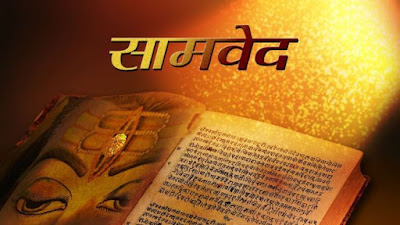
The Samaveda, also known as the “Veda of Melodies,” is one of the four ancient Indian scriptures known collectively as the Vedas. It has tremendous importance within the Hindu tradition, mainly because it has given a great emphasis on music and chant as the worship. Unlike the Rigveda, which is composed mostly of hymns and verses to be recited, Samaveda gives prominence to melodies and musical forms. In that way, the sound and rhythm are emphasized within the experience of the spiritual.
Historical Context of Samaveda
Dating back to around 1500-500 BCE, the Samaveda is the second of the four Vedas, which include the Rigveda, Samaveda, Yajurveda, and Atharvaveda. Traditionally, it is believed to have been compiled by sage Vyasa. The Samaveda comprises 1,875 verses, though many of these are derived from the Rigveda, adapted for musical chanting. The text was primarily meant for the ceremonial use of the priests, who would chant its verses during rituals known as yajnas (sacrifices).
Structure and Content of Samaveda
It has been generally divided into two main sections: Melodic Section or Ghana, and the Textual Section or Pañcāṅga. In the melodic section is the actual song or chant. These were meant to be sung usually to a specific tune, which heightened the mystical effect of the rites. Instructions for the correct pronunciation and inflection of chanting are included in the textual section, highlighting how sounds can build a connection that’s deeper.
The hymns of the Samaveda are grouped according to different deities. There are hymns of Agni, the fire god; Soma, the moon god; and Indra, the king of the gods. The hymns were intended to invoke blessings, prosperity, and abundance. These core values of ancient Indian society can be seen in the hymns.
Ritual Importance of Samaveda
The main role of the Samaveda is in the context of Vedic rituals, particularly the Soma sacrifices, where the drinking and offering of Soma are central acts. The precise intonation and rhythm of the Samaveda chants play a crucial role in these ceremonies, believed to influence the efficacy of the rituals and invoke the presence of deities. The musical aspect is considered vital; it is believed that the correct chanting can elevate the spiritual energy of the ritual, leading to desired outcomes.
Influence on Music and Culture
The Samaveda has had an enduring influence on Indian classical music and dance. A large number of ragas, or musical scales or modes, in Indian music can be traced to the melodic structures found in the Samaveda. The text is an early expression of the relationship between sound, emotion, and spirituality, an idea that will shape multiple art forms in Indian history.
In addition, the importance of sound and its transcendental properties in the Samaveda has shaped many philosophical and spiritual beliefs beyond the Vedic texts. The idea of sound as a means to divine connection can be seen in various forms of spiritual practices from different cultures, which makes it all the more universal in its teachings.
Yajurveda
This text combines prose and verse, serving as a manual for rituals. Here, the language is more straightforward and instructive, focusing on clarity to ensure proper ritual performance.
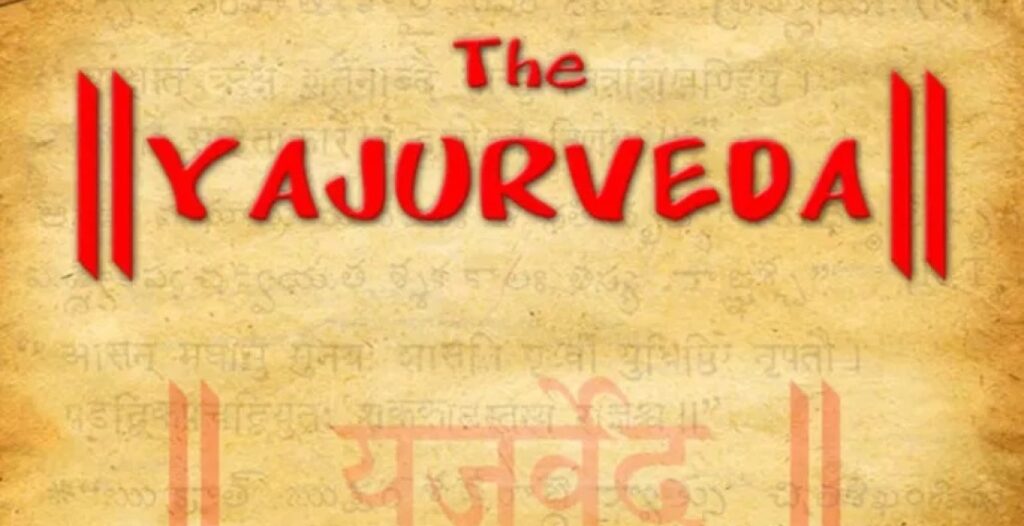
One of the four canonical texts that are collectively known as Vedas, the Yajurveda is one of those texts that play a highly important role in the ritualistic and ceremonial aspects of the Vedic tradition. Of all the Vedas, the Yajurveda is more of a guide in conducting rituals, with equal proportions of prose and verse in its teachings.
Content of Yajurveda
The Yajurveda is distinct in its two-fold nature. There are two principal parts of it: the Shukla (White) Yajurveda and the Krishna (Black) Yajurveda. The difference is in their form and composition. The White Yajurveda is more organized and is in a simple, orderly form, whereas the Black Yajurveda is disjointed, often interspersing prose instructions with verses that accompany certain rituals.
One very outstanding aspect of the language of Yajurveda is how transparent and direct it has become. It is made so with regard to practitioners who execute their sacrifices and rituals with regard to what is said during it. Thus, no wrong practices of performance would occur and invite error because what is at stake are important ritual practices in the tradition.
Rituals and Practices in Yajurveda
Ritual performance is the core focus of the Yajurveda, and that includes yajnas that are regarded as necessary to uphold cosmic order and to appease the deities. The text also gives extensive guidelines on preparation of offerings, pronunciation of mantras, and rituals at appropriate times. The details of the practice reflect an understanding of the power of words and action in generating the presence and grace of gods.
One of the most important aspects of the Yajurveda is the preservation and transmission of ancient ritual knowledge. It fills the gap between the sacred texts and practical application, which allows practitioners to perform elaborate ceremonies, such as the Ashvamedha (horse sacrifice) and various household rituals.
Cultural and Spiritual Significance of Yajurveda
In itself, the Yajurveda contains very high levels of cultural and spiritual significance, as it carries the tenets of dharma or righteousness and interdependence within the cosmos. Rituals defined in its verses are not simply ceremonial; rather, they are seen as a method of bringing an individual consciousness into harmony with universal order.
This also mirrors the growth of spiritual thought in ancient India. The more advanced the society was, the greater the intricacies of rituals involved, thus calling for a clearer understanding of the sacred. The Yajurveda shows the transition between ritual and society to spirituality.
Atharvaveda
The Veda has hymns with more diverse content, and it often contains spells, charms, and medical prayers. Here, the language is far more colloquial and reflective of everyday concerns. There is a shift from the other Vedas’ more formal and ritualistic tone.
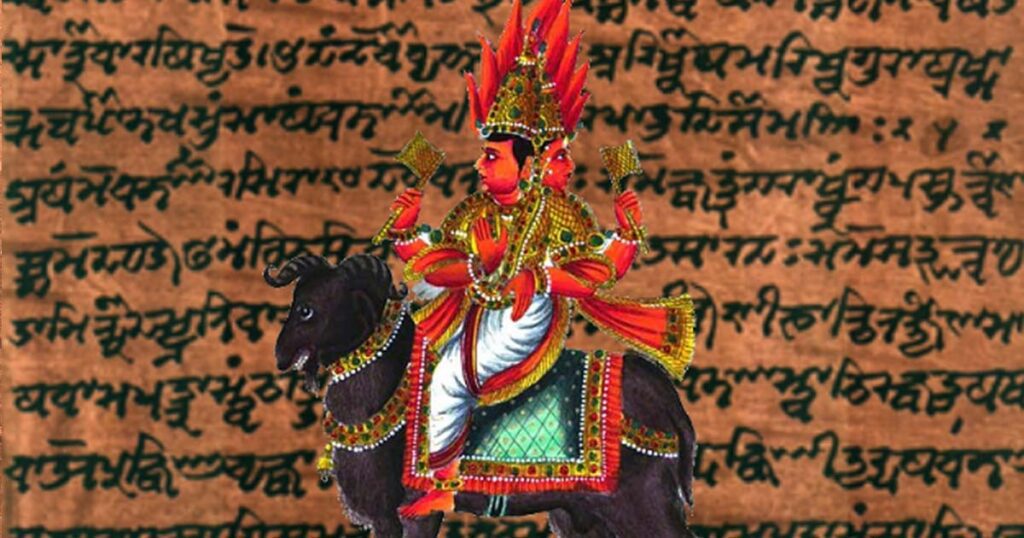
Among all four Vedas in the Hindu tradition, the uniqueness of content in Atharvaveda stands out-thy are hymns, spells, philosophy, and everyday practical knowledge. Unlike any of the other Vedas that predominantly concentrated on rituals and sacrifices, Atharvaveda ventures into day-to-day health concerns and well-being and questions the status of social justice of their era, hence making this an extremely important text reflective of ancient Indian society’s multifaceted nature.
Background of Ancient India and Atharvaveda
The Atharvaveda was composed over several centuries and is believed to have been established between 1200 and 1000 BCE. The language used to compose the Vedas was Sanskrit. It is a collection of hymns, incantations, and magical formulas that show a transition from ritualistic Vedic practices to a more general understanding of human experience. The traditions contained within it reveal the socio-cultural fabric of early Indian civilization, emphasizing the importance of both physical and spiritual well-being.
Read: Powerful Shiv Mantras
Structure and Content of Atharvaveda
The Atharvaveda has 20 books or Kandas, which comprises about 730 hymns. These texts are rich in variety and range from healing to marriage, prosperity, protection from evil forces, etc. The hymns are mainly for the purposes of rituals for everyday life, ceremonial blessings, and practical remedies.
One of the most distinguishable features of the Atharvaveda lies in its usage of magic and mysticism. Many of the hymns are dedicated to achieving health, wealth, and protection. The magic is performed using spells popularly known as “sukta.” These spells are said to tap into supernatural and natural forces, signifying the understanding of Vedic cosmos and the belief that everything is interrelated.
Social and Philosophical Dimensions
The Atharvaveda addresses social issues uniquely, such as governance, ethics, and justice. It contains hymns promoting social harmony and wellbeing by giving prominence to the role of the rulers and righteous leadership. Moreover, it introduces the concept of deceit and morality and encourages society to hold virtues and justice.
Atharvaveda philosophically, like other Vedas, looks forward to a cyclical order of the universe and talks about maintaining balance in the world to show that human spiritual needs go hand-in-hand with material ones. Thus duality has been essential for understanding the human journey of the universe and can encompass a rich view of spirituality than ritualism alone.
Long-term Impact of Atharvaveda
The teachings of the Atharvaveda have had a lasting influence on various aspects of Hindu thought and practice. Its emphasis on healing and health can be seen echoed in traditional Indian medicine, or Ayurveda, showing the deep connection between spirituality and physical wellness. Moreover, the text has contributed to the evolution of ethical and moral principles in Indian philosophy, providing insights that are relevant even in contemporary society.
The Atharvaveda also features a crucial role in rituals on personal and communal wellbeing; it is therefore very valid in modern spiritual practices. Its insights into human emotions, relationships, and societal structures resonate with people looking to get through the complexities of life today.
Significance of the Language used to compose the Vedas
The language used to compose the Vedas reveals the intellectual and spiritual preoccupations of Vedic society. It has complex structure that makes room for very deep philosophical questions and discussions on metaphysical concerns. Densely packed, this language serves both ritual functions and philosophical inquires as well, bridging the practical and the transcendent.
Cultural Insight: Analyzing Vedic Sanskrit gives scholars glimpses into the values, beliefs, and practices of ancient Indian society. The intricacies within the language reveal the cultural tapestry woven through rituals, hymns, and philosophy.
Linguistic Evolution: The change from Vedic Sanskrit to Classical Sanskrit represents a critical evolution in linguistic practice. The study of the Vedic texts is essential for linguists in tracing the development of the language and how it adapted to the changing social and cultural landscapes.
Philosophy and Religion: The Vedic texts contain basic ideas in Hindu philosophy, including ideas on dharma (duty), karma (action), and moksha (liberation). The vocabulary allows for the most subtle expressions of thought, so it forms the basis for later Hindu thought.
Read: How to reach Neelkanth Mahadev temple from Rishikesh?
Conclusion
The language used to compose the Vedas is not just a medium for communication; it is a tool for deep spirituality, culture, and philosophy. In rich phonetics and flexible syntax, with its deep morphological structure, Vedic Sanskrit has revealed to us a window of ancient worlds where language and thought are intertwined. The further these texts are explored by scholars, the importance of the language for the formation not only of religious beliefs but also human thought evolves. Understanding the Vedas through their language continues to inspire generations, showcasing the enduring legacy of early Indian literature.

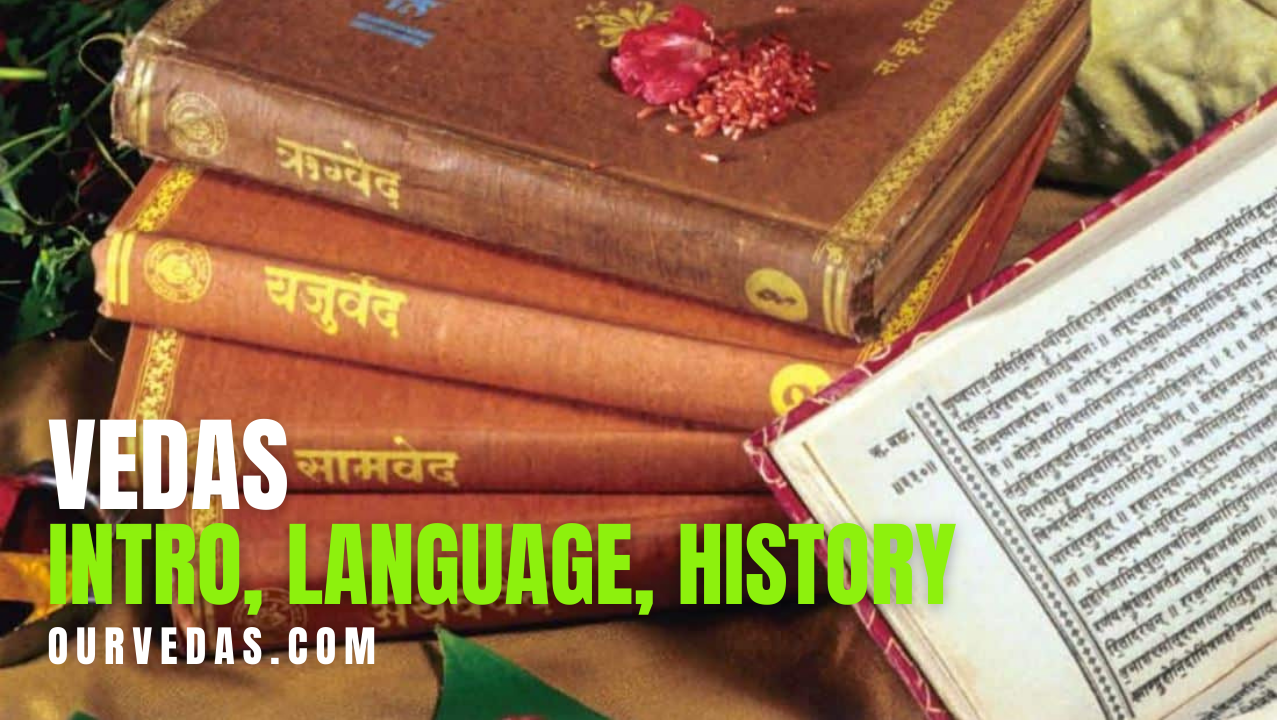

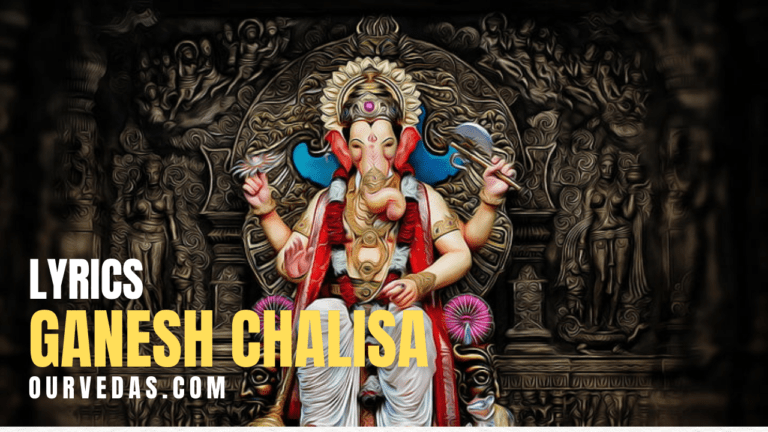



You helped me a lot with this post. I love the subject and I hope you continue to write excellent articles like this.